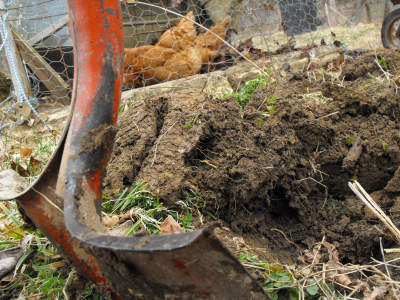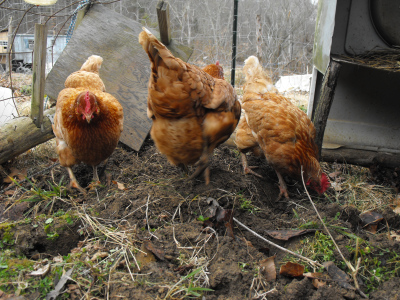
Planning and renovating garden beds
 I
amused myself Sunday morning with a sudoku
puzzle --- figuring out which beds each crop will grow in this
year. The process is actually quite fun, with three axes to
consider --- soil depth, amount of sun, and plant family over the last
three years. As an example, I wanted carrots to grow in an area
with deep soil, where carrots and parsley hadn't grown lately, with any
kind of sun exposure. In contrast, my peas don't mind thinner
soil, but I want them in one of the sunniest spots since I
plant them so early, and of course the bed can't have hosted peas,
beans, or peanuts lately.
I
amused myself Sunday morning with a sudoku
puzzle --- figuring out which beds each crop will grow in this
year. The process is actually quite fun, with three axes to
consider --- soil depth, amount of sun, and plant family over the last
three years. As an example, I wanted carrots to grow in an area
with deep soil, where carrots and parsley hadn't grown lately, with any
kind of sun exposure. In contrast, my peas don't mind thinner
soil, but I want them in one of the sunniest spots since I
plant them so early, and of course the bed can't have hosted peas,
beans, or peanuts lately.
The puzzle was engrossing and fun, but I quickly realized that we don't
have enough beds in rotation to plant all of the veggies I hope to grow
this year. Two years ago, I was
working for a non-profit, trying to keep the garden
going between
writing grants and attending meetings. I was so stressed out,
that when I planned last year's garden, I cut out nearly a quarter of
the growing area. In farmer speak, I let those areas go fallow;
in Anna speak, the weeds grew up.
The downside of last
year's smaller garden is that we didn't
grow quite enough vegetables to make it through this winter.
We'll probably have to buy some veggies in March and April, which is an
unpleasant surprise since we we haven't bought vegetables (beyond
onions and potatoes) in years.
On the upside, I managed to keep the beds that were in rotation last
year well weeded and mulched and started to cut down on the awful weed
population that grew up during my stressed out, non-profit year.
Overall, a year of gardening smaller made sense and was an asset to the
farm (and my sanity.)
 Even though I advocate no-till
farming, I never
manage to put down a sheet mulch a
year in advance to start new beds (or re-start fallow
ones.) So, I'm
back to a bit of digging to delete the weeds from last year's fallow
beds. I like to plant potatoes in these
spots, since the tubers necessitate a second round of digging in the
fall, ensuring that few deep-rooted weeds survive the renovation
year.
Even though I advocate no-till
farming, I never
manage to put down a sheet mulch a
year in advance to start new beds (or re-start fallow
ones.) So, I'm
back to a bit of digging to delete the weeds from last year's fallow
beds. I like to plant potatoes in these
spots, since the tubers necessitate a second round of digging in the
fall, ensuring that few deep-rooted weeds survive the renovation
year.
On Sunday, I dug up a
few of the beds, just spading the
soil enough that the chickens could get a foothold, then watched as our
feathered friends went to town scratching up the soil. After a
few days of chicken scratching (and fertilizing), I'll rake the beds to
pull out any big root masses, mound the soil back up, and cover the
renovated beds with a heavy leaf
mulch. This
method has worked very well in the past, as long
as I plant the potatoes on raised mounds --- last year I flubbed by
putting the seed potatoes below the original ground level and watched
them rot in our wet soil. Hopefully this fall, I'll have
delicious potatoes and some newly weed-free beds.
Want more in-depth information? Browse through our books.
Or explore more posts by date or by subject.
About us: Anna Hess and Mark Hamilton spent over a decade living self-sufficiently in the mountains of Virginia before moving north to start over from scratch in the foothills of Ohio. They've experimented with permaculture, no-till gardening, trailersteading, home-based microbusinesses and much more, writing about their adventures in both blogs and books.
Want to be notified when new comments are posted on this page? Click on the RSS button after you add a comment to subscribe to the comment feed, or simply check the box beside "email replies to me" while writing your comment.
